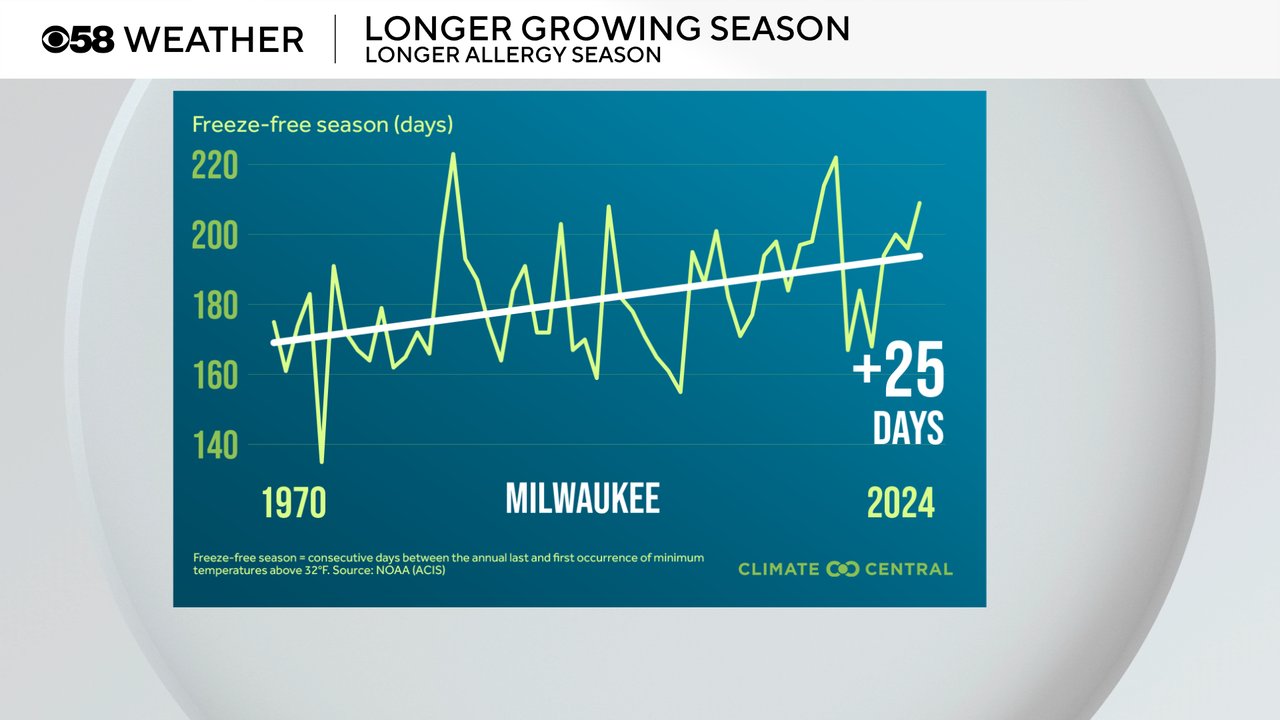According to local allergists, the allergy season in Wisconsin has officially started. The start to the season typically begins with tree pollen which is currently at high levels with a pollen count of 665 well above the historical average according to the local Allergy, Asthma and Sinus Center. Juniper, Cedar, Maple, Boxelder and Willow pollens are currently being detected.
The start to Wisconsin's allergy season has many factors. Lingering winter weather or a rainy start to spring can delay the start of the season and early warm, sunny spring days can cause the season to start early. Typically the first tree pollens detected in Wisconsin are blown in from states to our south. Because of this, elevated pollen counts have been detected in Wisconsin since the middle of March, but now we are starting to see our local trees add to those pollen counts. The next pollen allergen to typically arrive in Wisconsin is Grass which starts to show up at the beginning and middle of May.
Climate change and a continued warming climate in Wisconsin is having an undeniable impact on the local allergy season. According to Climate Central, Milwaukee is seeing a longer growing season over the last 50+ years. The number of freeze free days and the growing season has increased by about 25 days meaning our allergy season has also grown by 25 days.
Local allergists are seeing similar trends with the length of the Tree pollen season increasing by about 25 days just over the last 20 years. The maximum tree pollen counts are also increasing and over the last 20 years has grown by about 1,000 counts.
Download the CBS 58 Weather app to track when temperatures might warm up increasing pollen counts and when rain chances increase which can decrease pollen counts.
















